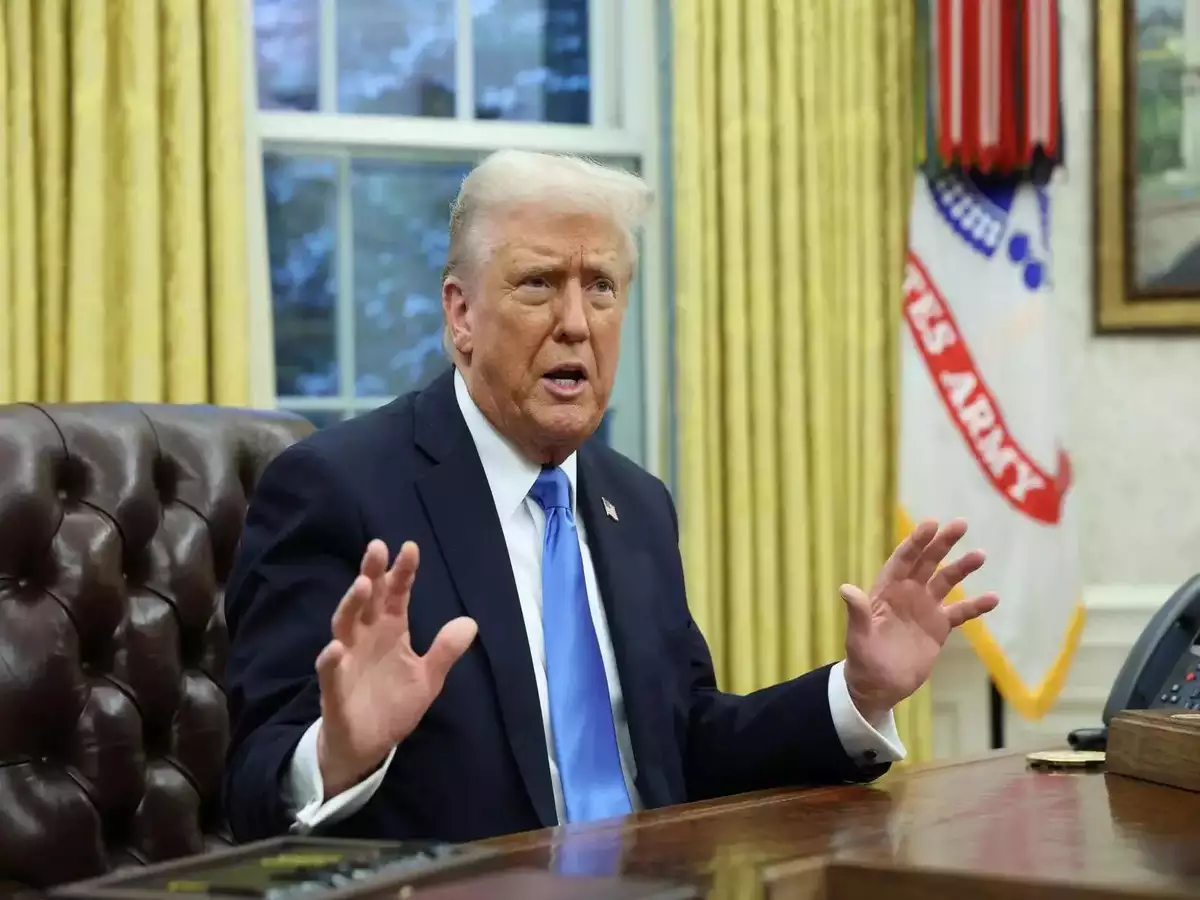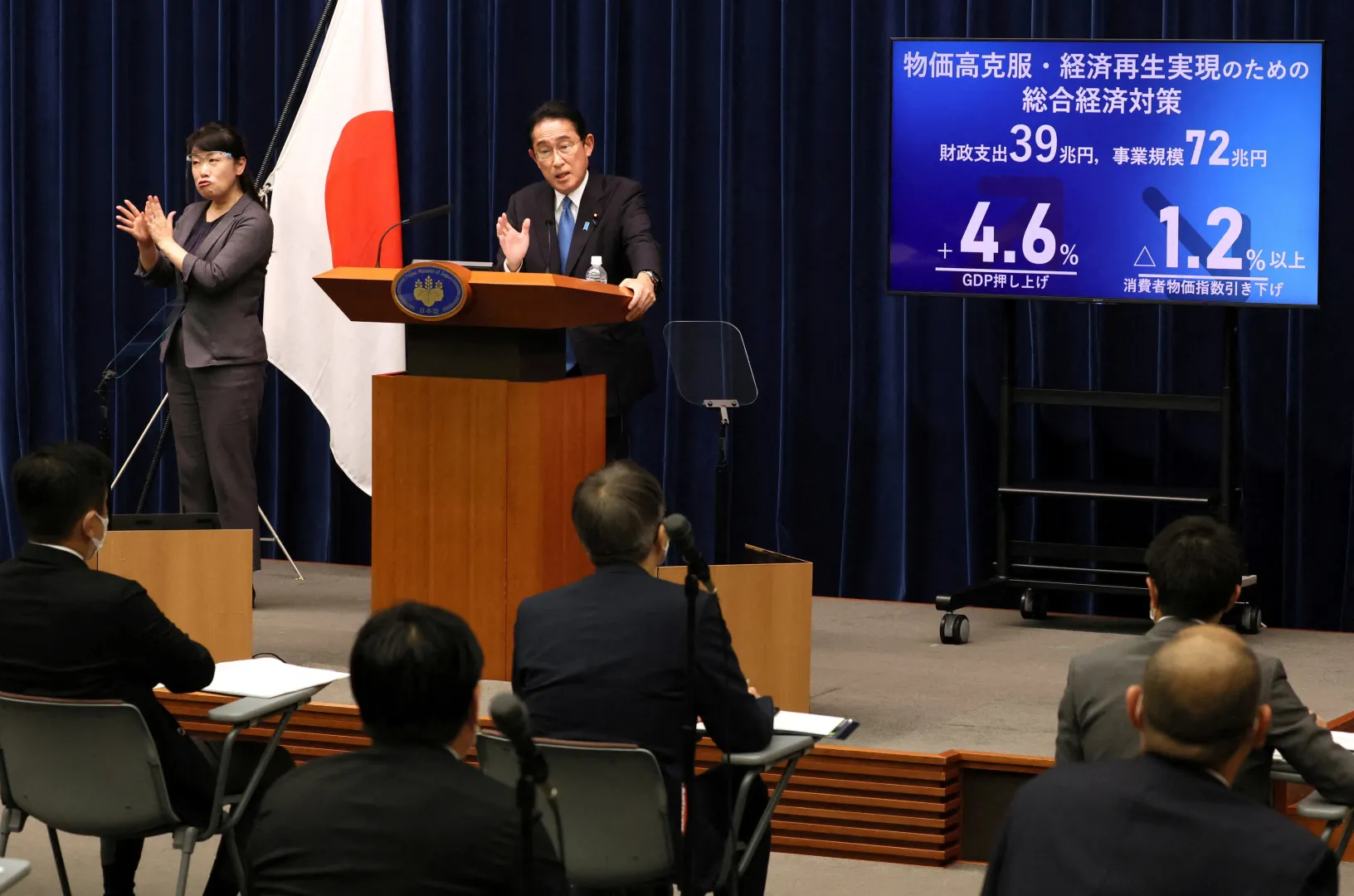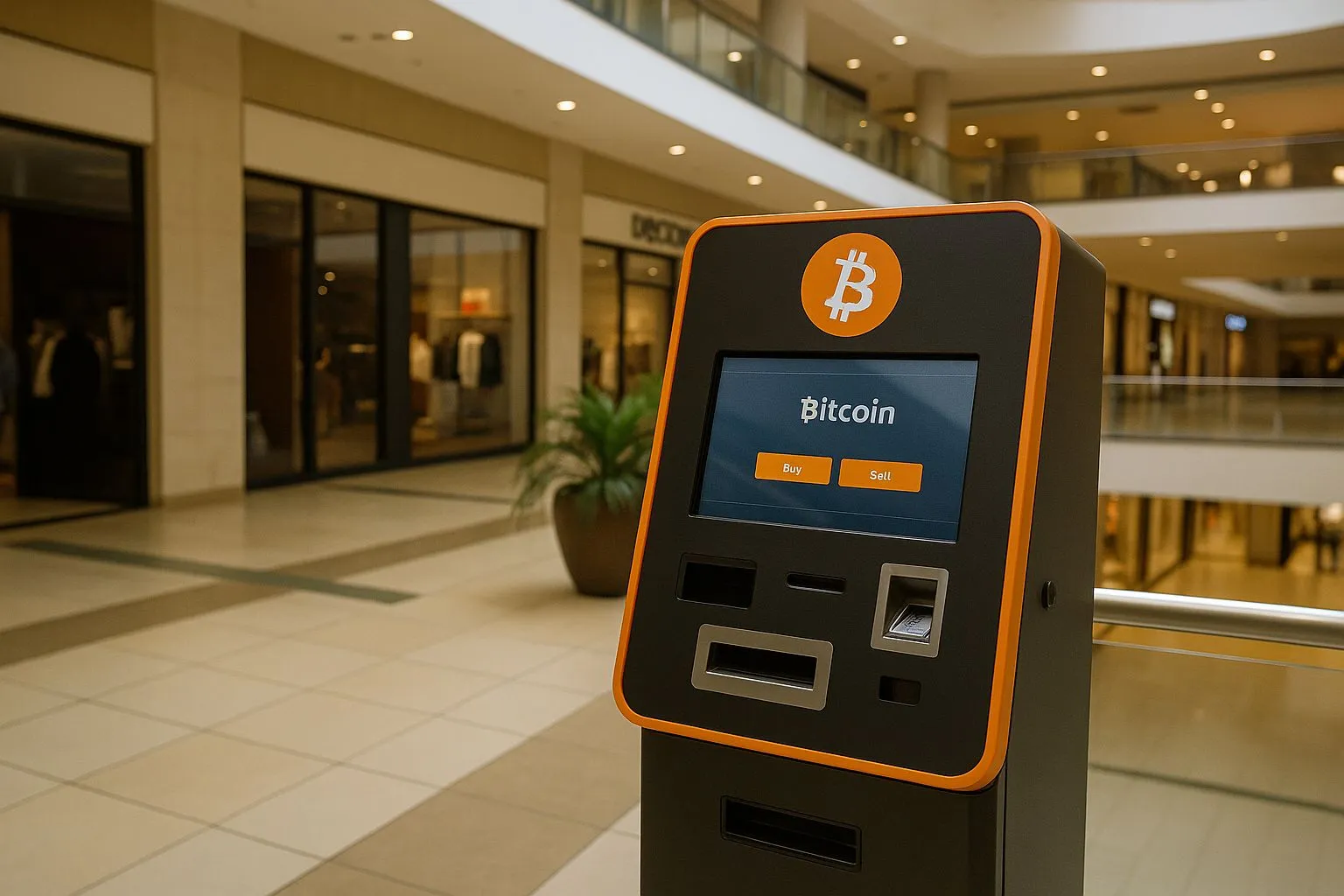In a dramatic turn that has stirred debates among economists and policymakers alike, President Donald Trump has floated a provocative plan that could see 20% of savings generated by Elon Musk’s newly established Department of Government Efficiency (DOGE) returned directly to American taxpayers. Dubbed the “DOGE Dividend,” this initiative—if implemented—would not only redistribute federal savings but might also have far-reaching consequences for an economy already grappling with persistent inflation.
The Genesis of DOGE and the New Dividend Proposal
President Trump, speaking at the FII Priority Summit in Miami on February 20, 2025, outlined his vision for leveraging the cost savings identified by DOGE. According to Trump, the plan would see 20% of the savings channelled back to taxpayers, while another 20% would be allocated to reducing the national debt. Although details remain sparse, the concept has already ignited both enthusiasm and apprehension.
The idea first gained traction on Elon Musk’s social media platform, X, when a user publicly suggested that a portion of DOGE’s savings be distributed as a dividend check to every taxpayer. Musk’s response—indicating that he would “check with the President”—seemingly paved the way for Trump’s subsequent remarks. The DOGE initiative, created by executive order just last month, is claimed to be saving “billions and billions of dollars every single day” by identifying instances of waste, fraud, and abuse across government operations.
By proposing a DOGE Dividend, Trump aims to not only provide immediate financial relief to citizens but also to address the burgeoning national debt. With the US national debt reaching $35.5 trillion in the 2024 fiscal year—an increase of $1.4 trillion from 2023—and a rising debt-to-GDP ratio, the pressure on fiscal policymakers has never been greater.
Potential Inflationary Implications
While the idea of handing out dividend checks funded by government savings sounds appealing to many, there is growing concern among economists that such a payout could exacerbate inflationary pressures. At a time when the Federal Reserve has been struggling to contain post-pandemic inflation—recently recording a 3% inflation rate in January, well above its 2% target—the infusion of additional cash into the economy might have unintended consequences.
A Delicate Balance
Historically, direct payments to citizens have been a double-edged sword. During the COVID-19 pandemic, the federal government issued over 476 million payments totaling $814 billion to support households. These measures, while providing critical relief, have also been implicated in pushing consumer prices to a 41-year high shortly after the final round of checks was distributed. Critics argue that when a significant amount of liquidity enters the economy too quickly, it can lead to demand-pull inflation—where the surge in consumer spending outpaces the ability of supply chains to meet demand.
In a recent interview with Fox News, President Trump shifted blame for rising prices onto the Biden administration, claiming, “Inflation is back. I had nothing to do with it.” However, Trump’s own proposal runs counter to his longstanding pledge to tackle inflation from “Day One” of his presidency. Many analysts worry that the DOGE Dividend, despite being funded by efficiency savings, could reheat an economy already battling elevated prices.
Economic Research and Expert Analysis
Researchers at the St. Louis Fed have previously estimated that government stimulus was responsible for roughly 2.6 percentage points of the 7.9% annual inflation rate recorded in February 2022. Their analysis underscored how “generous fiscal support contributed to an increase in the demand for consumption goods during the pandemic, but industrial production did not adjust quickly enough to meet the sharp increase in demand.” Applying similar logic to the DOGE Dividend, experts caution that distributing a sizable portion of government savings directly to households could trigger a similar mismatch between demand and supply.
Furthermore, the Bureau of Labor Statistics reported that consumer prices in January surged by a half percentage point—the largest monthly jump since August 2023. Such volatility adds to the uncertainty of whether an additional cash payout, even one derived from cost-cutting measures, might stoke inflation further.
Historical Precedents: Stimulus Checks and Their Aftermath
To better understand the potential impact of the DOGE Dividend, it is instructive to look at previous instances when the federal government distributed direct payments to American citizens. During the early months of the COVID-19 pandemic, the government rolled out several rounds of stimulus checks:
- In March 2020, qualifying Americans received $1,200.
- A subsequent round in December 2020 distributed $600 to eligible citizens.
- When President Biden took office in March 2021, an additional round totaling $1,400 was sent out.
While these measures were credited with providing essential relief during an unprecedented crisis, they also coincided with periods of accelerated price increases. Critics argue that while such checks boosted consumer spending, they inadvertently contributed to overheating an already fragile supply chain.
The DOGE Dividend proposal echoes this approach but under very different economic circumstances. With inflation stubbornly above the Federal Reserve’s target and consumer prices showing signs of persistent upward pressure, many fear that injecting even “saved” money into the economy might reverse the progress made in curbing inflation.
The Political and Fiscal Landscape
National Debt and Fiscal Priorities
A central pillar of Trump’s argument in favor of the DOGE Dividend is its potential to reduce the national debt. With the US debt-to-GDP ratio climbing and the overall national debt expanding at a rapid clip, fiscal conservatives have long argued that reducing debt should be a priority. Trump’s proposal, which would see 20% of DOGE’s savings used to pay down the debt, is aimed at addressing these concerns head-on.
Yet, balancing debt reduction with inflation control is a notoriously challenging task. The US Treasury Department’s recent figures indicate that the debt increased by $1.4 trillion in fiscal year 2024 compared to 2023. In such a scenario, while reducing debt is crucial, doing so through measures that might inflate consumer spending could prove counterproductive. Some economists warn that if the dividend spurs an uptick in demand, it could lead to higher interest rates as the Federal Reserve might be forced to tighten monetary policy to rein in inflation—a move that could stifle economic growth.
Broader Fiscal Policy Implications
The proposal has also sparked debate over broader fiscal policy priorities. Trump’s administration, if re-elected, is expected to pursue a range of economic initiatives—including tariffs, mass deportations, and other measures—that some experts argue could further increase the cost of everyday goods and services. In this context, the DOGE Dividend might be seen as one element in a larger, and possibly contradictory, fiscal strategy.
Some policymakers argue that while returning savings to taxpayers is a laudable goal, it should be balanced with the need to maintain price stability. “Fiscal stimulus can be beneficial in times of economic downturn, but in an environment where inflation is already a concern, any additional injection of liquidity must be carefully calibrated,” noted one senior economist at a leading policy institute.
The Role of DOGE in Modernizing Government Efficiency
A New Frontier in Public Administration
DOGE—the Department of Government Efficiency—is a novel initiative conceived to harness technology and data analytics to root out inefficiencies within federal agencies. According to Trump, DOGE has been instrumental in identifying billions of dollars in waste and fraud, leading to substantial savings for taxpayers. This initiative is part of a broader trend where governments are increasingly looking to the private sector—and innovators like Elon Musk—for solutions to age-old bureaucratic challenges.
By deploying advanced analytics and leveraging cutting-edge technologies, DOGE aims to streamline government operations and cut down on unnecessary expenditures. Proponents argue that such efficiency measures not only save money but can also lead to improved public services and better allocation of resources. However, the transformation of government processes is rarely instantaneous, and skeptics caution that the purported savings might take time to materialize.
Innovation Versus Implementation
While the concept of a government efficiency department is not entirely new, the branding of DOGE and its association with high-profile figures like Trump and Musk have thrust it into the limelight. This association has generated significant public interest—and, unsurprisingly, some confusion—given the name’s overlap with the popular cryptocurrency Dogecoin. Nonetheless, the core objective of DOGE is clear: to identify and eliminate waste within federal spending, thereby freeing up resources that can either be reinvested in public programs or returned to citizens.
The challenge, however, lies in translating theoretical savings into tangible benefits. Past attempts to reform government operations have often faced hurdles such as bureaucratic inertia, political opposition, and technical limitations. As such, while DOGE’s early reports are promising, many experts remain cautiously optimistic about its long-term impact on federal spending.
Reactions from the Political Spectrum and the Public
Supporters Embrace the Plan
Among Trump’s supporters, the DOGE Dividend has been welcomed as a long-overdue measure that would put money directly into the pockets of hardworking Americans. Advocates argue that, by returning a portion of government savings, the plan aligns with conservative principles of fiscal responsibility and limited government intervention. Proponents also point out that a dividend check funded by efficiency measures is fundamentally different from deficit-financed stimulus, as it repurposes funds that are already available rather than creating new money.
In political rallies and on social media platforms, many have hailed the proposal as a “game changer” that could provide immediate relief to families while simultaneously addressing the national debt. For these supporters, the idea resonates with a broader desire for transparency and accountability in government spending.
Critics Warn of Unintended Consequences
On the other side of the spectrum, critics warn that the DOGE Dividend could have adverse economic consequences. Economists and fiscal conservatives alike express concerns that the additional cash infusion, even if derived from efficiency gains, could stoke inflation in an already overheated economy. They note that while past stimulus payments were necessary in times of crisis, the current economic landscape is markedly different.
Some analysts have also questioned the feasibility of accurately quantifying DOGE’s savings in real time. “Efficiency savings are not like a pot of money sitting in a vault,” remarked one financial policy expert. “They are estimates, and there’s a risk that if those estimates are overly optimistic, the resulting payout could exceed what is sustainable without triggering inflationary pressures.”
Additionally, political opponents of Trump have seized on the proposal as an example of his administration’s broader fiscal recklessness. In interviews and op-ed pieces, several commentators have argued that the DOGE Dividend, rather than being a prudent use of taxpayer money, represents a risky gamble that could undermine long-term economic stability.
Broader Macroeconomic Context: Inflation, Debt, and Fiscal Stimulus
The Inflation Challenge
Inflation remains one of the most persistent challenges facing the US economy. Despite concerted efforts by the Federal Reserve to bring consumer prices down to its 2% target, recent data indicate that inflationary pressures are still very much alive. Consumer prices rose by a half percentage point in January alone, marking the largest monthly jump since August 2023. In this context, any policy that further increases disposable income must be weighed against the risk of sparking additional price rises.
Economic theory suggests that when consumers suddenly have more money at their disposal, spending increases, which in turn drives up demand. If supply does not keep pace with this surge in demand, prices will inevitably rise—a phenomenon known as demand-pull inflation. Given that the DOGE Dividend would distribute funds directly to taxpayers, there is a real risk that it could contribute to such a scenario, particularly if the timing coincides with other expansionary fiscal policies.
Fiscal Stimulus and National Debt
The US government’s borrowing needs have ballooned in recent years. With the national debt now standing at $35.5 trillion and the debt-to-GDP ratio on the rise, fiscal policymakers face a daunting challenge. Past episodes of aggressive fiscal stimulus—such as the extensive relief measures during the pandemic—have been criticized for contributing to inflationary pressures. Researchers at the St. Louis Fed have highlighted that such stimulus efforts, while necessary under extraordinary circumstances, can also lead to unintended economic distortions.
Trump’s proposal to use DOGE savings as a dual tool—to pay down debt and to distribute dividends—attempts to address both these issues simultaneously. However, critics remain skeptical that this dual approach can be executed without adverse side effects. They warn that if the dividend portion triggers higher consumer spending, the Federal Reserve might be forced to adopt even tighter monetary policies, potentially stifling economic growth.
The Road Ahead: Political and Economic Implications
Potential Policy Adjustments
If the DOGE Dividend proposal moves forward, it is likely that Congress and regulatory bodies will closely scrutinize its design and implementation. The challenge for policymakers will be to ensure that any payout is calibrated to avoid overheating the economy while still providing meaningful relief to taxpayers. This could involve setting strict parameters on the amount of savings eligible for distribution, or even phasing the payments over time to mitigate a sudden surge in demand.
Furthermore, the proposal may prompt a broader debate about how best to modernize government efficiency and accountability. The creation of DOGE signals an effort to harness technology and data analytics in the public sector—a move that could pave the way for additional reforms aimed at curbing wasteful spending. However, the success of these initiatives will depend on the ability of government agencies to deliver on their promises of efficiency gains in a measurable and sustainable manner.
Political Ramifications
The DOGE Dividend is also set to become a flashpoint in the ongoing political debates over fiscal policy, government spending, and the role of direct payments in the economy. Supporters of Trump argue that the proposal embodies a new era of accountability and fiscal discipline, while opponents view it as yet another example of populist policy that could have destabilizing effects.
As the debate unfolds, both sides are likely to draw on historical precedents and economic research to bolster their arguments. For instance, advocates may cite the temporary boosts in consumer confidence seen during previous stimulus payments, whereas critics may reference the inflationary aftermath experienced in the wake of large-scale fiscal interventions during the pandemic.
Concluding Reflections
President Trump’s proposal to introduce a DOGE Dividend—a plan that would return 20% of efficiency savings directly to American taxpayers—represents a bold experiment at the intersection of government efficiency and fiscal stimulus. While the potential benefits of such a program are clear—a direct infusion of cash to households and a measure to reduce the national debt—the risks, particularly in terms of reigniting inflation, cannot be ignored.
In an economic landscape still reeling from the dual challenges of high inflation and a ballooning national debt, the DOGE Dividend proposal is emblematic of the difficult choices facing policymakers. Balancing the need for fiscal relief with the imperative of maintaining price stability will be crucial. As debates rage over the merits of the plan, one thing is certain: any decision to distribute savings directly to taxpayers must be underpinned by rigorous economic analysis and a cautious approach to implementation.
With inflation recently climbing to 3% and consumer prices showing signs of volatility, the stakes could not be higher. As the Trump administration and its allies continue to refine the details of the DOGE Dividend, economists, policymakers, and the public will be watching closely to see whether this innovative approach can deliver on its promises without unintended consequences.
Ultimately, the future of the DOGE Dividend—and its impact on both the economy and the national debt—will depend on a delicate balancing act between efficiency, fiscal responsibility, and the broader goal of achieving long-term economic stability. Whether this initiative becomes a blueprint for future government efficiency programs or a cautionary tale of fiscal overreach remains to be seen.
For now, the proposal has reignited discussions on the role of government in managing the economy, the appropriate use of taxpayer funds, and the complex dynamics of inflation in a post-pandemic world. As the debate unfolds on Capitol Hill and in boardrooms across the country, the coming months will likely reveal not only the feasibility of the DOGE Dividend but also its lasting impact on America’s fiscal future.
Ready to take your career to the next level? Join our dynamic courses: ACCA, HESI A2, ATI TEAS 7 , HESI EXIT , NCLEX – RN and NCLEX – PN, Financial Literacy!🌟 Dive into a world of opportunities and empower yourself for success. Explore more at Serrari Ed and start your exciting journey today! ✨
photo source: Google
By: Montel Kamau
Serrari Financial Analyst
21st February, 2025
Article, Financial and News Disclaimer
The Value of a Financial Advisor
While this article offers valuable insights, it is essential to recognize that personal finance can be highly complex and unique to each individual. A financial advisor provides professional expertise and personalized guidance to help you make well-informed decisions tailored to your specific circumstances and goals.
Beyond offering knowledge, a financial advisor serves as a trusted partner to help you stay disciplined, avoid common pitfalls, and remain focused on your long-term objectives. Their perspective and experience can complement your own efforts, enhancing your financial well-being and ensuring a more confident approach to managing your finances.
Disclaimer: This article is for informational purposes only and does not constitute financial advice. Readers are encouraged to consult a licensed financial advisor to obtain guidance specific to their financial situation.
Article and News Disclaimer
The information provided on www.serrarigroup.com is for general informational purposes only. While we strive to keep the information up to date and accurate, we make no representations or warranties of any kind, express or implied, about the completeness, accuracy, reliability, suitability, or availability with respect to the website or the information, products, services, or related graphics contained on the website for any purpose. Any reliance you place on such information is therefore strictly at your own risk.
www.serrarigroup.com is not responsible for any errors or omissions, or for the results obtained from the use of this information. All information on the website is provided on an as-is basis, with no guarantee of completeness, accuracy, timeliness, or of the results obtained from the use of this information, and without warranty of any kind, express or implied, including but not limited to warranties of performance, merchantability, and fitness for a particular purpose.
In no event will www.serrarigroup.com be liable to you or anyone else for any decision made or action taken in reliance on the information provided on the website or for any consequential, special, or similar damages, even if advised of the possibility of such damages.
The articles, news, and information presented on www.serrarigroup.com reflect the opinions of the respective authors and contributors and do not necessarily represent the views of the website or its management. Any views or opinions expressed are solely those of the individual authors and do not represent the website's views or opinions as a whole.
The content on www.serrarigroup.com may include links to external websites, which are provided for convenience and informational purposes only. We have no control over the nature, content, and availability of those sites. The inclusion of any links does not necessarily imply a recommendation or endorsement of the views expressed within them.
Every effort is made to keep the website up and running smoothly. However, www.serrarigroup.com takes no responsibility for, and will not be liable for, the website being temporarily unavailable due to technical issues beyond our control.
Please note that laws, regulations, and information can change rapidly, and we advise you to conduct further research and seek professional advice when necessary.
By using www.serrarigroup.com, you agree to this disclaimer and its terms. If you do not agree with this disclaimer, please do not use the website.
www.serrarigroup.com, reserves the right to update, modify, or remove any part of this disclaimer without prior notice. It is your responsibility to review this disclaimer periodically for changes.
Serrari Group 2025












